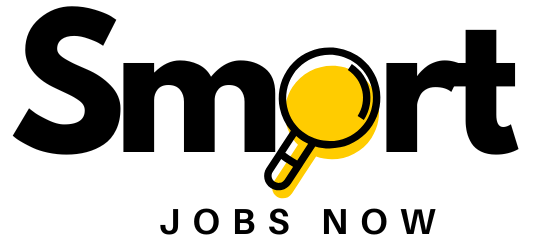Creating a LinkedIn headline that gets noticed is crucial for standing out in the professional world. Your headline is often the first impression potential employers or connections have of you. In this guide, we will explore the significance of crafting an effective headline, the essential components to include, and common pitfalls to avoid. By reflecting your personal brand and optimizing your headline, you’ll attract more views and connections on LinkedIn.
Understanding the Importance of LinkedIn Headlines
Your LinkedIn headline is more than just a tagline; it is a strategic tool for personal branding. It represents a summary of your professional identity and expertise. Reinforced by keywords, it becomes a critical component for visibility in search results. When users browse through thousands of profiles, a compelling headline can differentiate yours from the rest. It’s not just about stating your current role; instead, it’s an opportunity to showcase your value proposition. In a job market where first impressions matter, a well-crafted headline can establish your credibility instantly. Consider including industry-specific terms and highlighting unique skills to enhance allure.
LinkedIn’s algorithm also takes the headline into account when it populates search results, underscoring its importance even further. The headline, alongside the profile picture, creates the first impression, setting the tone for what potential networks, employers, or clients may perceive you as. It’s essential to align this with your broader professional brand. Curating a headline that is informative yet engaging can significantly boost your network growth and job opportunities.
Engagement is crucial, and a meticulously crafted headline invites others to connect, thereby expanding your reach. Think beyond your current job title and instead focus on what makes you unique and approachable in the professional world. Whether you’re actively job seeking or building your professional network, the right headline can accelerate your objectives. To achieve maximum impact, regularly evaluate its relevance and keep it updated with your evolving professional narrative.
Key Elements of an Effective LinkedIn Headline
Your LinkedIn headline serves as your digital handshake. It’s the first impression for potential employers, clients, or partners. To craft an effective LinkedIn headline, there are key elements you should focus on to make it stand out and attract the right attention.
1. Keywords: Incorporate relevant keywords that are common in your industry. These help in searchability and ensure your profile is visible to the right audience. Consider terms that potential employers or clients might use to find someone with your skills and expertise.
2. Value Proposition: Clearly state what makes you unique and valuable. This could be your unique skill set, experiences, or contributions you can bring to a team or project. Showcasing your value makes your profile more appealing to viewers.
3. Target Audience: Tailor your headline to appeal to the audience you want to attract. Whether you’re looking for a new job, freelance opportunities, or business connections, directing your message to the right group is vital.
4. Tone and Personality: Your headline should reflect your personal brand and the tone you wish to convey. Whether professional, approachable, or innovative, your choice of words should align with your overall branding strategy.
5. Brevity and Clarity: Keep your headline concise but informative. LinkedIn allows up to 220 characters, but you should aim to make every word count, ensuring clarity while maintaining brevity.
By focusing on these key elements, you can create a LinkedIn headline that not only captures attention but also effectively represents you and your professional objectives.
Common Mistakes to Avoid in LinkedIn Headlines
When writing a LinkedIn headline, it’s easy to make mistakes that can hinder your profile’s effectiveness. Avoid using buzzwords or jargon that offer no real value. Words like “expert,” “guru,” or “ninja” might sound impressive, but they often fail to convey specific skills or achievements.
Another common mistake is not customizing your headline to your field or industry. A generic headline doesn’t stand out and might not attract the attention of recruiters or collaborators in your niche. Ensure your headline reflects your specialization and keywords relevant to your industry.
Using overly complex language can also be a pitfall. Aim for clarity and simplicity. A headline that is difficult to understand may cause potential leads to overlook your profile.
Moreover, avoid making your headline solely about the job title. While it’s essential to include your role, also consider incorporating aspects that highlight what sets you apart, like achievements or unique skills.
Lastly, refrain from using all caps or excessive punctuation, which can make your headline appear unprofessional or spammy. Stick to a clean and concise format that aligns with your professional image.
Crafting a Headline That Reflects Your Brand
Your LinkedIn headline is a critical aspect of your personal brand. It’s the first thing people notice, and it shapes their perception of you. An effective headline should be authentic to your brand, resonate with your professional identity, and communicate your unique value proposition.
Reflecting Your Brand
Begin by identifying the core elements of your brand. What are your key skills, values, and attributes? These should be evident in your headline. Use precise language that highlights your expertise and sets you apart. Avoid generic terms; instead, opt for specific descriptors that speak to your professional involvement.
Think about the message you want to convey. Are you innovative, results-driven, or customer-focused? These qualities should shine through. Additionally, consider the industry you’re in and tailor your headline to align with sector norms while showcasing your individuality.
Use of Keywords
Incorporate industry-related keywords that recruiters might use when searching. This improves your visibility and ensures your profile appears in relevant searches. Balance keyword usage with clarity to maintain a reader-friendly, cohesive headline.
Remember that your headline reflects not just your current role but also your aspirations. If you’re aiming for growth, your headline should hint at your readiness for new opportunities and challenges. This forward-thinking approach can signal to potential clients or employers that you are proactive and opportunistic.
Testing and Optimizing Your LinkedIn Headline
Testing and optimizing your LinkedIn headline can dramatically improve your visibility and profile effectiveness. By trying different headlines, you can determine which one brings more profile views and engagement. Use A/B testing, where you run two versions of your headline to see which performs better.
A/B Testing: Create variations of your headline. For instance, one could emphasize your expertise, while the other highlights achievements. Monitor which version attracts more views or messages over a specified period.
Use Analytics: LinkedIn provides analytics for profile views and search appearances. Regularly checking these stats helps you understand the impact of any changes you make. Look for trends in profile views after adjusting your headline.
Keywords are Important: Ensure that your headline includes keywords relevant to your industry. Experiment with different wordings to find which keywords yield better results in search appearances.
Solicit Feedback: Ask colleagues or mentors to review your headline. External feedback can provide insights you might overlook and can be invaluable in optimizing your headline.
Tweak your headline periodically to keep it fresh and aligned with any changes in your career path or industry terminology. A continuous process of testing and optimizing will ensure your LinkedIn headline remains powerful and effective in attracting attention.


